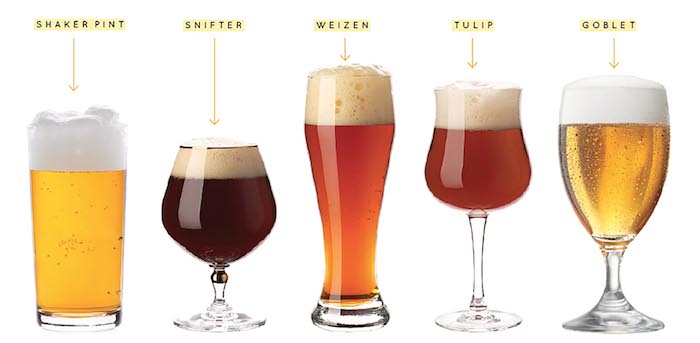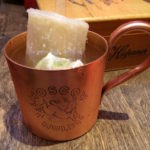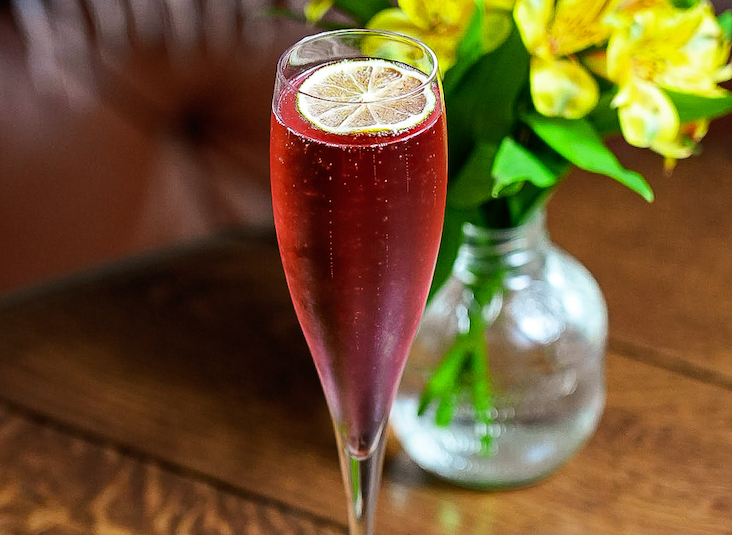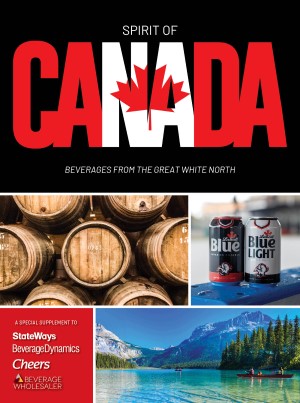Tulip, snifter, hefe or pint glass?
Choosing among today’s beer glassware selection seems almost as daunting as selecting a beer from the dizzying tap array at your local bar.
But why has beer — specifically, that of the craft variety — expanded its glassware? And is this some cheap marketing ploy or an actual advantage to the drinker?
Since the demise of Prohibition, brewers have been touting the flavor, aroma, and aesthetics of their beer, and even the lifestyle of their typical beer drinker, as the main means of winning new customers. For years “less-filling” fought “crisp and refreshing,” only to recently be replaced by “more hops,” “locally made,” and a laundry list of tasting notes that would make even a Master Cicerone sweat. But lately, brewers have not stopped there. They’ve gone beyond what’s poured inside the glass to consider how beer is served and how particular glassware can accentuate the very qualities of their beer that they’ve been shouting about for decades.
As with most things craft beer, the story starts with Jim Koch, founder of the Boston Beer Company. As legend has it, he created a specific pint glass for his Samuel Adams lager, complete with a laser-etched design on the bottom that “creates bubbles for constant aroma release” as well as an outward-bent lip, allowing for the drinker to “maximize enjoyment of sweetness from the malt.”
Turning things up a notch, German glassmaker Spiegelau reached out to Sam Calagione of Dogfish Head Brewery and Ken Grossman of Sierra Nevada Brewery in 2013 to create a new IPA glass, after watching Calagione drink from one of their glasses on the short-lived Discovery Network series Brewmasters. The reformed IPA glass resembles a tulip glass placed on a skinnier, rippled base — complete with a Dogfish Head logo etched in the bottom for carbonation. According to the collaborators, the ridges in the bottom section were created to aerate the beer with every sip to break out more aromatics. The small tulip shape was formed to bring the hoppy, floral and other aromas for which IPAs are known easily to the drinker’s nose.

Different beer glassware at the beer-centric Yard House chain.
Not to be outdone, “big beer” has gotten into the mix as well. Molson Coor’s Cobra brand has recently stated that it has created “the perfect beer glass”. The company enlisted help from the London-based advertising agency Karmarama, as well as hydrodynamics and fluid mechanics specialists and professors at various universities in the U.K., including Birmingham University and Imperial College. According to Karmarama, the new glass “has a unique channel in the interior facia, allowing the liquid to flow smoothly around the glass to the base, creating a whirlpool effect, releasing flavor and aroma and creating the perfect head, all in order to bring to life the beer’s ‘impossibly smooth’ positioning.”
But these developments are really nothing new. In fact, beer glassware has been evolving since the 14th century, when German brewers invented the top-covered stein in order to keep disease-carrying flies out of patrons’ beer during the Black Plague. In the 17th century, Belgian brewer Kwak developed its iconic glass — a long flume, rounded at the bottom, placed in a wooden stand — so that the beer could be handed up to horse-drawn coach drivers as they taxied their patrons around town.
How far will this trend of specialty beer glassware go in modern times? So far there are no signs of it stopping. Even craft beer bars such as Brooklyn’s Tørst — often named one of the best beer bars in New York — have gotten into the mix. Tørst’s glassware serves a different purpose rather than accentuating flavor, clarity and other features of beer, however. Its glass — which resembles your typical stemmed wineglass but for an intricately tessellated design of shapes on the exterior — was intended to make it easier for bartenders to measure out 4-, 8- or 10-oz. pours, depending on the row of shapes to which the beer is poured.
Ultimately, these and other glasses being created by breweries and bars represent something beyond their benefits for aroma, carbonation and efficiency (though those help too). They represent another avenue by which a beer drinker may make a direct connection with a brewery or local beer bar by buying their glassware and sampling the beer with it. That alone, in the world of Instagram followers and tap-takeovers, shows merit in and of itself. It is a means of individual connection and personal pride each time the consumer enters the bar or pulls a glass from the kitchen cabinets.
That being said, Newton taught us that every action has a reaction, and the current beer glassware craze is no exception. Just recently, online style website Cool Material posted a response to the glassware madness. It’s message? The reason your beer tastes good is not a result of the glassware, it’s the culmination of quality ingredients, expertise and sweat put into making the best beer that brewer could. As the article concludes, “The perfect beer glass is the one with the beer in it.” It’s hard to argue with that.
Drew Kostic is a home brewer and beer aficionado.







The nonic pint – did nothing for the sake of the beer EXCEPT made it easier for the bartender to clean, stack and serve, AND easier for the patron (whose grip strength or focus may be departing) to hang on to. In that regard, hasn’t it done everything necessary and improved all of our beer drinking experiences?
I love that the commitment to the craft has filtered into every aspect of enjoying a great brew!
Awesome collection i like your wine and beer glass.